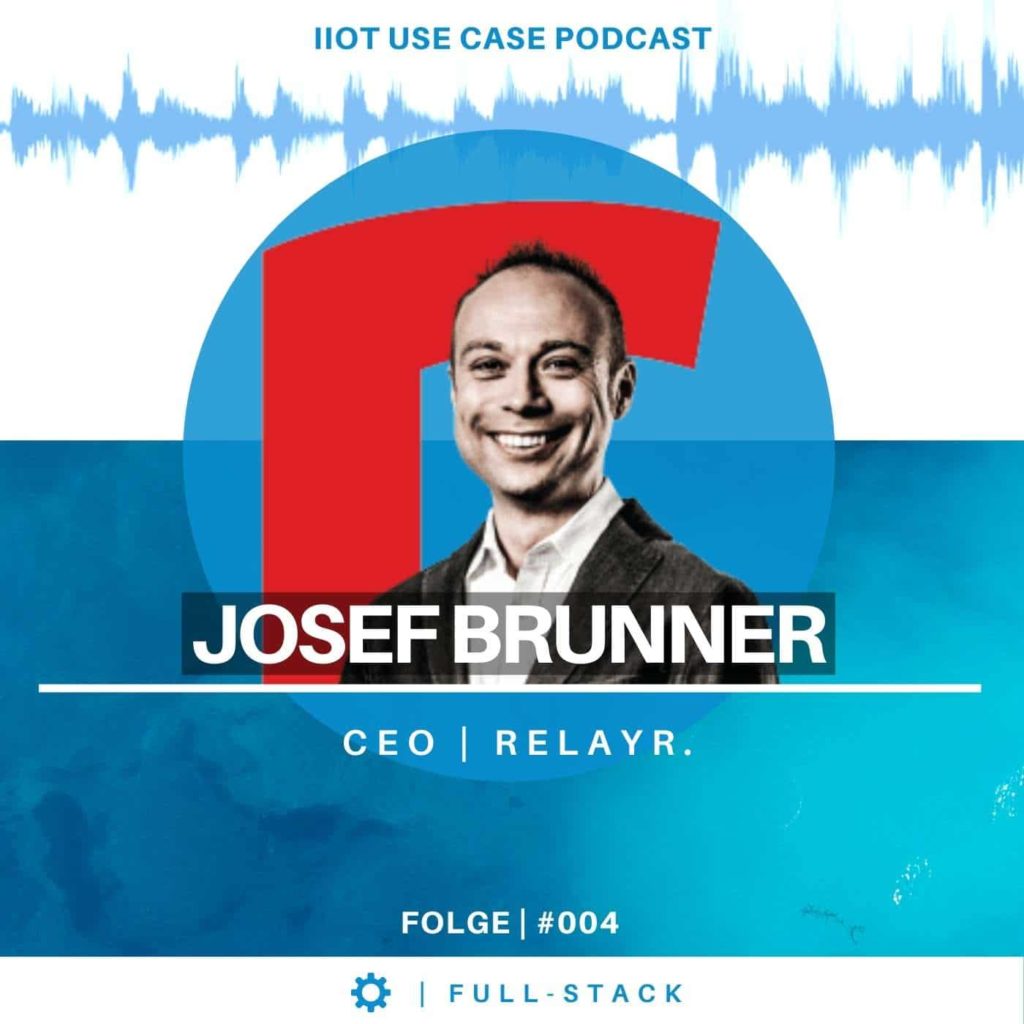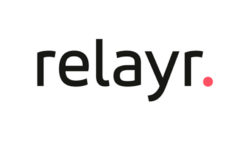In this episode of the Industrial IoT Use Case Podcast, I talk with Josef Brunner, CEO of Relayr, about “x as a Service models” and related CapEx and OpEx developments in enterprises. In this context, Josef uses specific use cases to explain the development of CapEx – the capital expenditure – and OpEx – the operating expenditure – of personnel costs, for example. We also talk about how to minimize the risk of IoT projects in terms of so-called “revenue sharing business models”. Afterwards, we will talk about the process of how I can shape my transformation of IoT projects, especially in the midmarket – away from the classic product – to my business in the future and how new and existing markets can develop for me.
The episode starts with an introduction of Josef Brunner and the company relayr. He started at relayr in 2014 as Founding Investor and Executive Chairman. In 2015, he took over the position of CEO. In this role, he coordinates the needs of various groups – from relayr’s management and strategy team, to investors, the Board of Directors, employees and, of course, customers. Before joining relayr, Josef Brunner founded several IT and cyber security companies, including the software provider JouleX and Bastille Networks, which was later acquired by Cisco. Already at Joulex, Brunner pushed the boundaries of technology in the development of sustainable and innovative energy-saving solutions. From a young age, he was characterized by an entrepreneurial spirit, which is why he started his first business at the age of 16. Since then, he founded several companies, acted as a corporate angel and mentored other founders. With such a wide range of tasks, it is hardly surprising that Brunner is a convinced advocate of productivity.
Explained | Revenue Sharing Business Model
Process | we need to understand the business case/ also the value creation technologically/ we need to believe in this/ we go into revenue share models “team” builds this business case, start by assessment, what do we need (Technological, risk transfer, etc.), components become a solution, example “Equipment as a Service”, alignment of interest with customer (association of trust)
Explained | Revenue Share Model | we want to understand what is the revenue we can realize (40-100 Mio for example), how big is the part of relayr, how important are the complimentary elements (risk and financing), how is the fair sharing with customers (value-share), challenge: case on paper develops differently in reality, conflict potential can form, only if milestones are reached, only if X-Mio are earned for you, we take sum Y, “emotional joint venture”, relayr earns money when the customer earns money
Market classification | Relayr
Relayr can be described as a “full-stack” provider that helps SMEs on the path to digitization. In doing so, Relayr brings solutions ranging from EDGE, middleware, analytics to finished dashboards. Through the acquisition of MunichRe, the company is financially stable and at the same time agile and independent. Due to the parent company, the insurance and risk transfer idea in the business model is particularly exciting. Here, Relayr offers customers a model that reduces the risk of Industrial IoT projects by a significant amount. The commercial result thus becomes reality.
The customer structure is primarily in the medium-sized manufacturing companies and the mechanical and plant engineering sector. In terms of sales, Relayr’s approach here is not so much one of technology, but rather one of use case storytelling, in order to achieve concrete added value for the customer. According to Josef, 80% of activity is primarily in “Pay per Use” and “X as a Service” models at the midmarket company. Many mid-market customers selling assets worth €50,000 – €500,000 have fewer approaches in IIoT service models. Here the scaling is more difficult.
Use Cases | Industrial IoT
We talk about exciting use cases from practice. Josef brings an example from customers in the machine and plant engineering industry, which manufactures espresso machines. The latter now offers its customer, in addition to the inventory business, not the entire plant, but “coffee quality as a service” – or as Josef calls it – the “cup as a service” quality. For the machine manufacturer, this is a new business model that can also be transferred to other industries. For example, similar approaches are known from the compressor environment. Here, in addition to the classic business, compressed air is sold as a service. One field of application here is, for example, the boiler in the building. In the course of the conversation, Josef talks about the use case for “equipment breakdown” and the corresponding insurance model behind it. Josef explains how downtime of machines and equipment in the field can be reduced by IoT solutions. Medium-sized companies such as “Flenders”, which is a market leader in mining operations as an engine manufacturer, has also reduced downtime during ongoing operations and optimized processes through Relayr.
Use Case | Increase up-time by x-% (downtime), Monthly equivalent X, of which we have Y, “we guarantee”, Risk transfer elements available, Equipment breakdown reduction (via MunichRe, knowhow), Performance contracting, participate based on %, Contractually challenging, Equipment as a Service (machine is financed, then elements become more important as financing terms depend on it),
Ecosystem | relayr takes risk, therefore very selected and selective number of partners, especially for global scaling, which does not come off the “shelf”, (certification, replacement of goods, availability, delivery times, response time, etc.), partnerships often in the hardware environment (delivery, professional service, sensors, implementation, hardware, connectivity)
IIoT market | Proud engineering, expertise, high quality machinery, 5 years ago: Medium-sized companies had their own digital team, platform, team, but often as a gimmick to the hardware, the journey started with technology, this is challenging, since technology is irrelevant, important: know market challenges, low-interest phase, difficult predictability production capacity (automotive), relayr: from this we derive what to have on the roadmap, different approach than classic machine builder, machine in focus, often use cases: a lot of data that was already available in the BUS system, understanding is coming or is coming forth today
Process | Equation = Market (in which I can potentially play a role, example Boiler: Market is building management, service, maintenance…? even if I am not strong in it today, is there a strong transformation happening there? Towards service models? Are there middlemen who will possibly no longer be middlemen in the future? Complimentary markets available? very entrepreneurial, detached from the product) *Correlation with startup approach + assets (product (often), financial position, cash flow, data, innovative people, access customers etc.,) = transformation with assets and the market, can I reinvent myself? If you can answer this, I quickly get to the business case, away from the product, away from the machine –> towards market
Transformation | BSC vs Agile: if it were easy everyone could do it, on slides it looks easy, when you get going it is not trivial to implement, relayr: advocate of “financial near-death experiences” (when I’m up against the wall and have to deliver), like a startup, then I have the impetus, financial cushion is great, however little pressure arises, startups are always “broke” and always have to be fast, is desperate, quick decision and consistent decisions, methaphors “agile, no hierarchy, free product design, free-floating electrons etc.” if you worry too much about it, you lose a problem to find, simple lean product to develop, commercially sensible to solve
Use Cases | Transmission: Compressed air, …
Use Case | Italian company, coffee machine producer (machines), “cup as a service” only to monetize the coffee, the machines free of charge, vertically strongly integrate, ensure that temp, pressure of the grinder corresponds to the quality, asset 30-50k, a lot of espresso must be sold, for this he needs a loyal customer base; alignment of interest: high quality coffee, CapEx -> OpEx, in the field: can such a model work, manufacturer attractive, barista must pay more, 1) Business case works, because there are no more financing costs, initial investment is omitted, can start quickly with appropriate quality promise 2) Learning when the machine makes good coffee (we don’t need datasets, we don’t have domain expertise) help me understand when this machine makes good coffee, what do we need to look out for? Architecture emerges (what sensor technology do we need), fast tracking, buyback models, buy old machines and then retrofit them (same performance characteristics), the probability of harder water? Pressure? Grinding process not optimal, then we can act – and guarantee the quality, the manufacturer’s promise, barista: Day 1 cash flow positive, he earns less, but better value: coffee quality level.
Use Case | Flenders, engine manufacturer, market leader: mining operations, ships with delivery commitments (process industry: risk of downtime), engine as a service model, power by the hour, CapEx not so relevant here, risk transfer more important (guaranteed availability war, mine has uptime the mine operator expects), MunichRe: Understands what risk means from an accounting perspective, commercial-, many companies today already make quality promises and guarantees, these are on balance sheets (MunichRe expertise), relayr + MunichRe: How can risk transfer be equity preserving or relieving? also interest rate conditions, due to the business risk to take: MunichRe new business line, less competition, …
Use Case | water damage (by me), start with relevant problem (reference to formula), worldwide 2nd biggest insurance exposure problem, provision of primary insurers huge, if solved: commercial and business leverage, formula: start with relevant problem (then technologic components), probability of success higher
IIoT market | EDGE computing, plays big role, advantages: 1) Speed, analytics +triggered functions (also not solvable over 5G and latencies). 2) lower dependence connectivity 3) Cloud costs, less data, relayr: previously different technology segments (EDGE, middleware, analytics) latter part of EDGE, was migrated, model training on EDGE, firm belief: EDGE is important, cloud: clear that importance will continue to increase, depends on use cases, mining: connectivity with EDGE plays bigger role, architecture looks different from machine builder (coffee machine)
Specific | Business Development Team, PreSales, Solution Architects (reasonable implementation), Recommendation -> rather provide solution, technical discussions should be minimized (business case in focus at customer), certainty must be there that the technological stack works, sales, savings, efficiency is guaranteed, but with this architecture.
Standards | not a big fan, construction industry has been trying to get standards with BIM since 70s, we try to get what we see in the field efficiently and quickly into commercial solutions, serve customers from different verticals, many standards, standards for new machines, but industrial machines life long
Are you interested in working with Josef?
Contact him via Linkedin!
Josef Brunner
Managing director relayr.
More about this implementation partner
Your implementation partner relayr.
The Internet of Things is changing how we use machines and equipment. Relayr is significantly shaping this new form of ‘Industrial IoT’. We extract relevant data from your existing machines and systems to help you improve your business results. Hundreds of companies around the world rely on our Industrial IoT platform and our service team to help our industrial customers realize OPEX-based business models for their respective markets. How do we do that? Relayr offers financing, insurance, IoT technology and related deployment from a single source. To this end, we cooperate with leading companies such as Munich RE and Hartford Steam Boiler (HSB). This makes us the first provider on the market to combine industrial IOT projects with insurance and financial services. This means you can make smart decisions for your company with all-round security.










